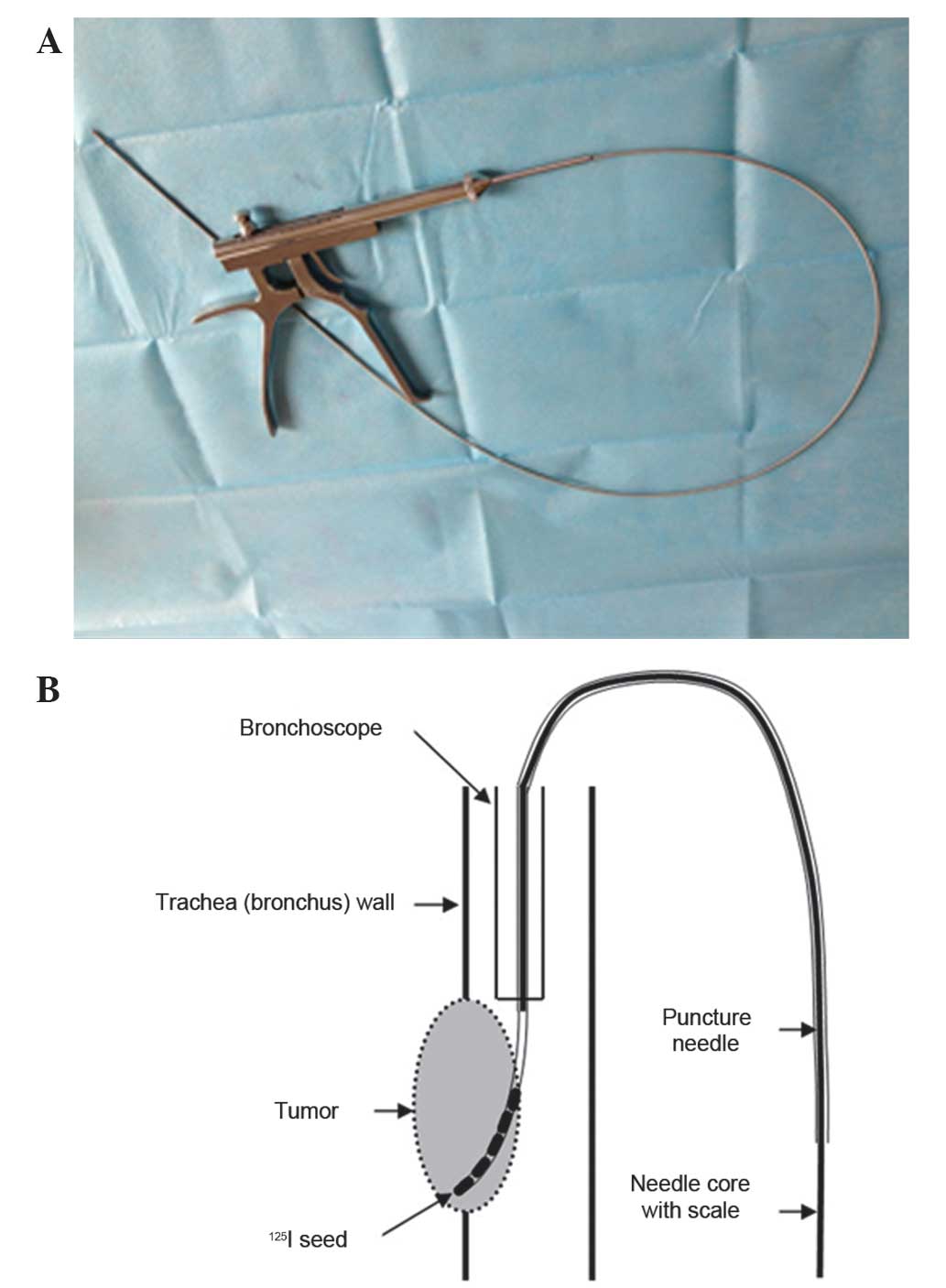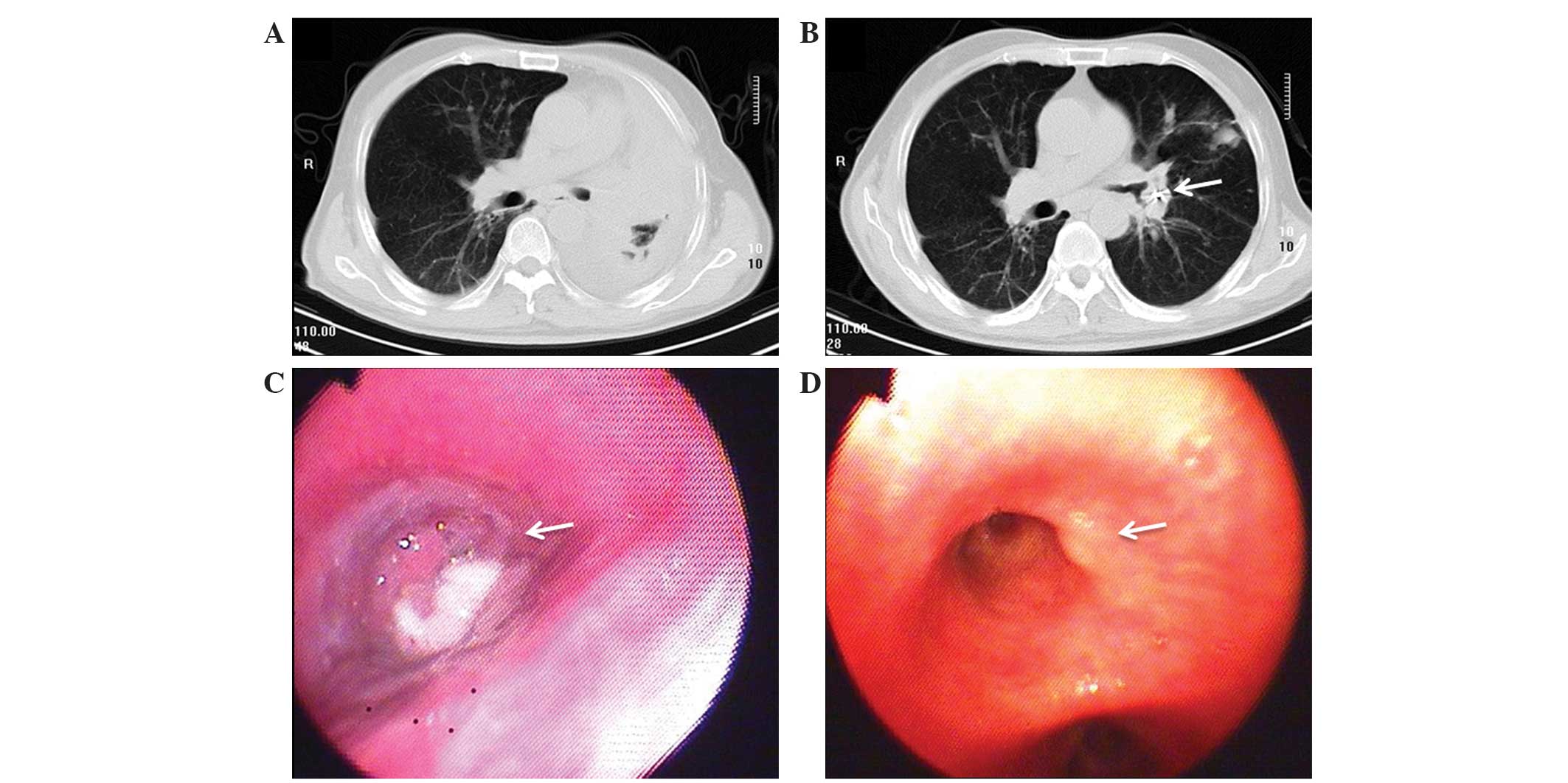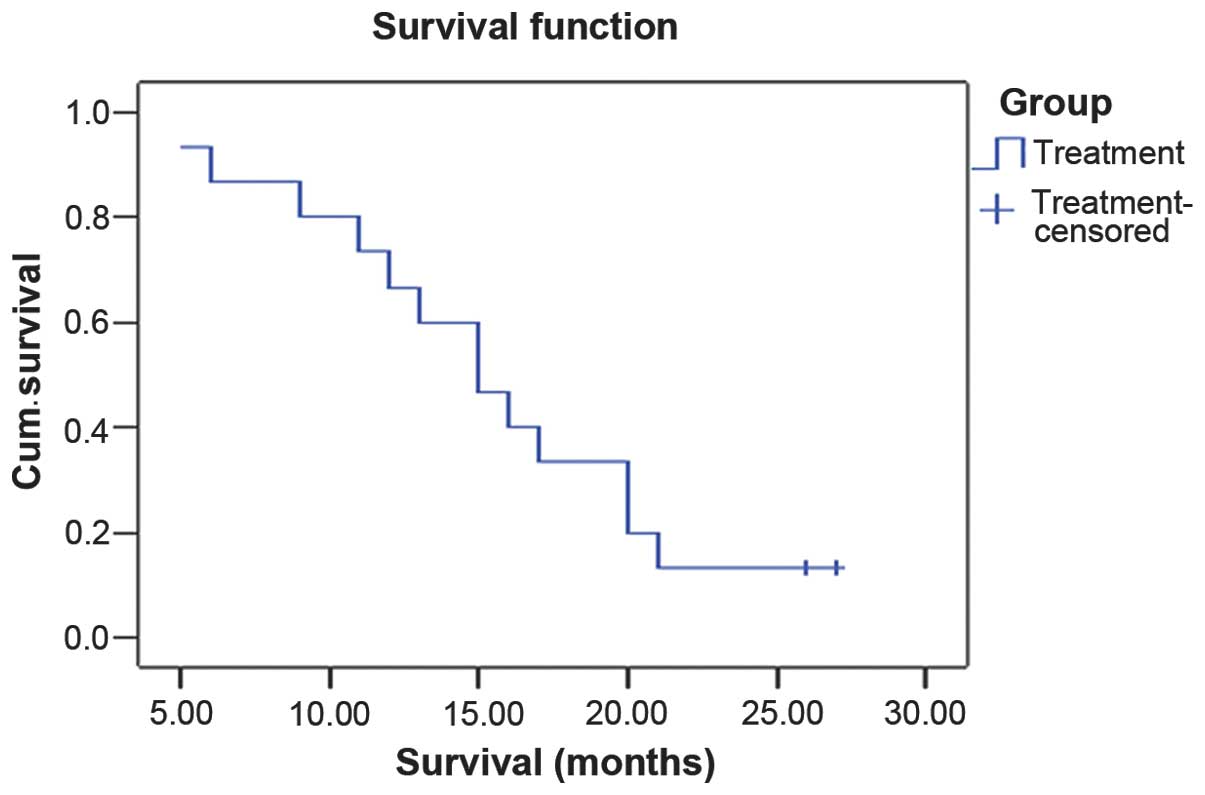|
1
|
Jemal A, Bray F, Center MM, et al: Global
cancer statistics. CA Cancer J Clin. 61:69–90. 2011. View Article : Google Scholar : PubMed/NCBI
|
|
2
|
Au WW, Su D and Yuan J: Cigarette smoking
in China: Public health, science, and policy. Rev Environ Health.
27:43–49. 2012. View Article : Google Scholar : PubMed/NCBI
|
|
3
|
Cavaliere S, Venuta F, Foccoli P, et al:
Endoscopic treatment of malignant airway obstructions in 2,008
patients. Chest. 110:1536–1542. 1996. View Article : Google Scholar : PubMed/NCBI
|
|
4
|
Niemoeller OM, Pöllinger B, Niyazi M, et
al: Mature results of a randomized trial comparing two
fractionation schedules of high dose rate endoluminal brachytherapy
for the treatment of endobronchial tumors. Radiat Oncol. 8:82013.
View Article : Google Scholar : PubMed/NCBI
|
|
5
|
Aumont-le Guilcher M, Prevost B, Sunyach
MP, et al: High-dose-rate brachytherapy for non-small-cell lung
carcinoma: A retrospective study of 226 patients. Int J Radiat
Oncol Biol Phys. 79:1112–1116. 2011. View Article : Google Scholar : PubMed/NCBI
|
|
6
|
Taira AV, Merrick GS, Galbreath RW, et al:
Long-term outcomes of prostate cancer patients with Gleason pattern
5 treated with combined brachytherapy and external beam
radiotherapy. Brachytherapy. 12:408–414. 2013. View Article : Google Scholar : PubMed/NCBI
|
|
7
|
Guo JH, Teng GJ, Zhu GY, et al:
Self-expandable esophageal stent loaded with 125I seeds:
Initial experience in patients with advanced esophageal cancer.
Radiology. 247:574–581. 2008. View Article : Google Scholar : PubMed/NCBI
|
|
8
|
British Thoracic Society Bronchoscopy
Guidelines Committee, a Subcommittee of Standards of Care Committee
of British Thoracic Society, . British Thoracic Society guidelines
on flexible bronchoscopy. Thorax. 56:(Suppl 1). i1–i21. 2001.
View Article : Google Scholar : PubMed/NCBI
|
|
9
|
World Medical Association, . World Medical
Association Declaration of Helsinki: Ethical principles for medical
research involving human subjects. JAMA. 310:2191–2194. 2013.
View Article : Google Scholar : PubMed/NCBI
|
|
10
|
Novello S and Le Chevalier T: Chemotherapy
for non-small-cell lung cancer. Part 1: Early-stage disease.
Oncology (Williston Park). 17:357–364. 2003.PubMed/NCBI
|
|
11
|
Jemal A, Siegel R, Xu J and Ward E: Cancer
statistics, 2010. CA Cancer J Clin. 60:277–300. 2010. View Article : Google Scholar : PubMed/NCBI
|
|
12
|
Schiller JH, Harrington D, Belani CP, et
al: Eastern Cooperative Oncology Group: Comparison of four
chemotherapy regimens for advanced non-small-cell lung cancer. N
Engl J Med. 346:92–98. 2002. View Article : Google Scholar : PubMed/NCBI
|
|
13
|
Tishelman C, Petersson LM, Degner LF and
Sprangers MA: Symptom prevalence, intensity, and distress in
patients with inoperable lung cancer in relation to time of death.
J Clin Oncol. 25:5381–5389. 2007. View Article : Google Scholar : PubMed/NCBI
|
|
14
|
Gorden JA and Ernst A: Endoscopic
management of central airway obstruction. Semin Thorac Cardiovasc
Surg. 21:263–273. 2009. View Article : Google Scholar : PubMed/NCBI
|
|
15
|
Mallick I, Sharma SC and Behera D:
Endobronchial brachytherapy for symptom palliation in non-small
cell lung cancer - analysis of symptom response, endoscopic
improvement and quality of life. Lung Cancer. 55:313–318. 2007.
View Article : Google Scholar : PubMed/NCBI
|
|
16
|
Escobar-Sacristán JA, Granda-Orive JI,
Gutiérrez Jiménez T, et al: Endobronchial brachytherapy in the
treatment of malignant lung tumours. Eur Respir J. 24:348–352.
2004. View Article : Google Scholar : PubMed/NCBI
|
|
17
|
Niu L, Zhou L, Xu K and Mu F: Combination
of cryosurgery and Iodine-125 seeds brachytherapy for lung cancer.
J Thorac Dis. 4:504–507. 2012.PubMed/NCBI
|
|
18
|
Zhang S, Zheng Y, Yu P, et al: The
combined treatment of CT-guided percutaneous 125I seed
implantation and chemotherapy for non-small-cell lung cancer. J
Cancer Res Clin Oncol. 137:1813–1822. 2011. View Article : Google Scholar : PubMed/NCBI
|
|
19
|
Wang ZM, Lu J, Liu T, et al: CT-guided
interstitial brachytherapy of inoperable non-small cell lung
cancer. Lung Cancer. 74:253–257. 2011. View Article : Google Scholar : PubMed/NCBI
|
|
20
|
Kubaszewska M, Skowronek J, Chicheł A and
Kanikowski M: The use of high dose rate endobronchial brachytherapy
to palliate symptomatic recurrence of previously irriadiated lung
cancer. Neoplasma. 55:239–245. 2008.PubMed/NCBI
|
|
21
|
Ozkok S, Karakoyun-Celik O, Goksel T, et
al: High dose rate endobronchial brachytherapy in the management of
lung cancer: response and toxicity evaluation in 158 patients. Lung
Cancer. 62:326–333. 2008. View Article : Google Scholar : PubMed/NCBI
|
|
22
|
Wang J, Wang J, Liao A, et al: The direct
biologic effects of radioactive 125I seeds on pancreatic
cancer cells PANC-1, at continuous low-dose rates. Cancer Biother
Radiopharm. 24:409–416. 2009. View Article : Google Scholar : PubMed/NCBI
|
|
23
|
Liao A, Wang J, Wang J, et al: Relative
biological effectiveness and cell-killing efficacy of continuous
low-dose-rate 125I seeds on prostate carcinoma cells in
vitro. Integr Cancer Ther. 9:59–65. 2010. View Article : Google Scholar : PubMed/NCBI
|
|
24
|
Hennequin C, Bleichner O, Trédaniel J,
Quero L, Sergent G, Zalcman G and Maylin C: Long-term results of
endobronchial brachytherapy: A curative treatment? Int J Radiat
Oncol Biol Phys. 67:425–430. 2007. View Article : Google Scholar : PubMed/NCBI
|













